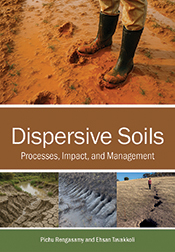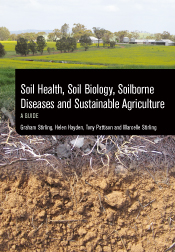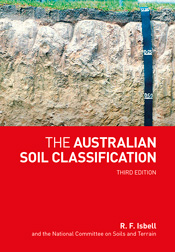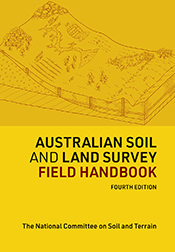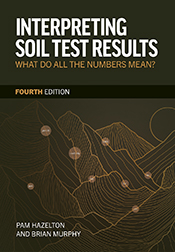Dispersive Soils
Processes, Impact, and Management
By: Pichu Rengasamy, Ehsan TavakkoliSynthesises decades of research to establish principles for diagnosis, prevention and remediation.
Dispersive Soils redefines the understanding of soil stability across agricultural, environmental, and geotechnical contexts. Moving beyond the traditional emphasis on sodicity, it conceptualises dispersion as a cross-disciplinary phenomenon arising from coupled chemical, physical, and hydrological processes. The book elucidates the mechanisms that drive structural breakdown and links them to consequences for productivity, infrastructure performance, and ecosystem integrity. + Full description
Synthesising decades of research, the book integrates insights from soil science, hydrology, geotechnical engineering, and land management to establish consistent principles for diagnosis, prevention, and remediation. Each chapter translates mechanistic understanding into applied strategies that enhance structural resilience, support sustainable production, and safeguard environmental quality. The volume provides a rigorous conceptual and empirical basis for re-evaluating how dispersive landscapes are characterised and managed, and outlines priorities for future research to strengthen the stability and long-term sustainability of vulnerable soils.
"This is a comprehensive and well-written book that provides a good blend of the historical perspective of sodic and dispersive soils to new, more accurate indices and approaches to characterizing problematic dispersive soils."
– Emeritus Professor S.R. Grattan, Department of Land, Air and Water Resources, University of California, Davis, USA
News
Sales in Australia and New Zealand only.
Reviews
"This is a comprehensive and well-written book that provides a good blend of the historical perspective of sodic and dispersive soils to new, more accurate indices and approaches to characterizing problematic dispersive soils.
This comprehensive book focuses on scientifically based processes and complexities affecting dispersive soils. While it acknowledges the importance of sodicity in characterizing dispersive soils and its historical approach, it includes other soil physical-chemical factors that can cause soils to disperse. Hence, this book describes the importance of moving away from traditional SAR and ESP indices to include other more comprehensive indices such as CROSSc, coupled with the electrical conductivity of the soil solution, which are more predictive of dispersive soil behavior. At the same time, the book provides detail into critical knowledge gaps in our understanding of the scientific mechanisms of dispersive soils and suggests opportunities for future research."
Emeritus Professor S.R. Grattan, Department of Land, Air and Water Resources, University of California, Davis, USA
Details
Paperback | March 2026 | $160.00ISBN: 9781486319794 | 188 pages | 245 x 170 mm
Publisher: CSIRO Publishing
B&W photographs, Illustrations
Features
- Integrates decades of research to guide evidence-based decisions in the assessment and management of dispersive soils.
- Links fundamental chemistry and physics with applied land and water management to support environmental stewardship and sustainable productivity.
- Examines dispersion processes through interdisciplinary perspectives spanning soil science, hydrology, and geotechnical engineering.
- Translates complex mechanistic understanding into practical diagnostic and remediation strategies.
- Provides a coherent framework for managing structural stability, restoring degraded landscapes, and protecting soil and water resources.
Contents
PrefaceAcknowledgements
1: Understanding dispersive soils: Moving beyond sodicity
2: Formation and distribution of dispersive soils
3: Chemical physics of dispersive soils
4: Impacts on agriculture and management of dispersive soils
5: Irrigation and dispersive soils
6: Impacts of dispersive soils on ecosystems, environments, and infrastructure, and possible solutions
7: Identification of dispersive soils
8: Knowledge gaps and future perspectives in dispersive soils research
Index
Authors
Dr Pichu Rengasamy is internationally recognised for pioneering research that has advanced the understanding of soil sodicity and salinity. His frameworks have reshaped how soil stability is diagnosed and managed and continue to inform both theoretical soil science and practical land-rehabilitation strategies worldwide.
Dr Ehsan Tavakkoli is an Associate Professor at the University of Adelaide. His research investigates how mineral reactivity, carbon cycling, and nutrient dynamics interact to control soil function and crop productivity, particularly under dispersive and salt-affected soils, and has advanced approaches for restoring degraded soils and strengthening the resilience of farming systems in Australia and beyond.

